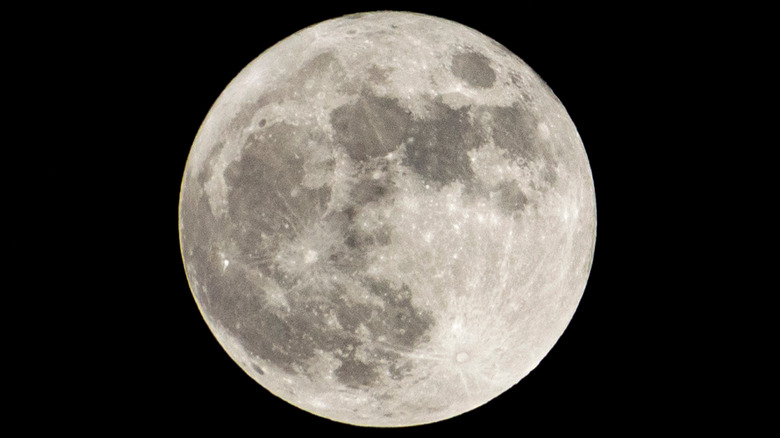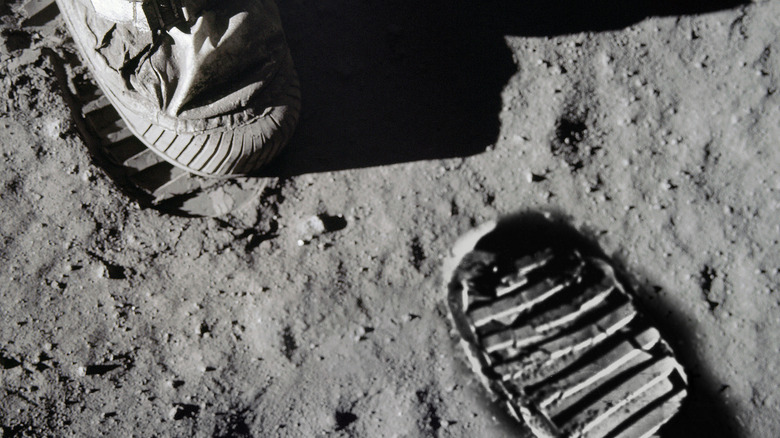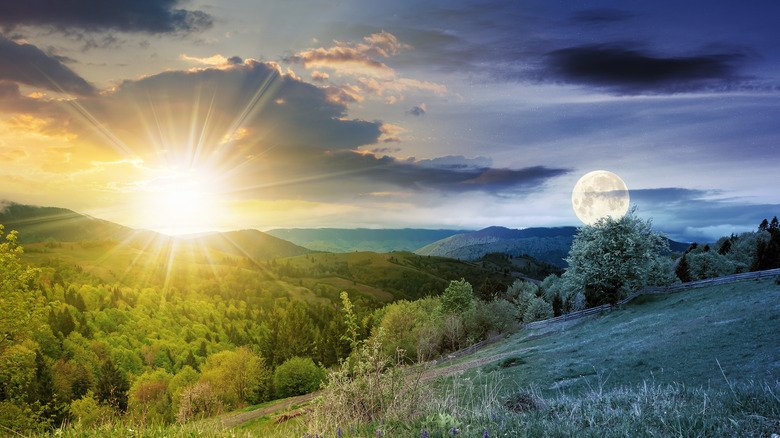The Science Behind Why The Moon Can Be Seen During The Day
The moon really is beautiful, and a full moon on a clear night is a remarkable thing to behold. It enjoys putting on a show for us beyond that, as well. Per Space, November 2022 marked the appearance of the Beaver Blood Moon: the lunar eclipse of a full moon that was so named because of the striking color that results from the unique event.
On a this-universe-and-beyond scale, Earth's familiar moon isn't particularly special. The gas giant Jupiter has many moons, scoffing at our meager single moon. The vast planet, NASA reports, has no less than 80 moons. One of them, Ganymede, is the largest that the solar system's eight planets have to offer, bigger than Mercury.
Moon envy doesn't get anybody anywhere, however. It's vital to appreciate what you do have, to accept how very privileged we are to have this stunning satellite visible in our skies every single day (which is more than one-fourth the size of the planet itself, according to the Natural History Museum). The moon has beguiled humanity since the earliest days of our species, but why is it visible during the daytime? Science has the answer.
The moon reflects light
Despite all the fuss that's often made about moonlight and how very remarkable it is to behold, there's a crucial thing to remember: the moon doesn't actually have any light of its own.
The solar system is home, as the most amateur of space enthusiasts will tell you, to the most iconic of light sources: the sun. The moon itself, per Live Science, is able to reflect that light. Not very much of it, reportedly: at most, 12% of the sun's light is reflected back by the moon. Nonetheless, it's enough to make it incredibly prominent in the night sky.
Stars like the sun generate light of their own, of course. They are, per Britannica, great balls of gas, which undergo complex processes and burn an awful lot of energy in doing so. We generally cannot see stars during the day, however, and scientist Dave Kornreich of Cornell University's Ask An Astronomer explains why: "When the sun is up, the blue color in sunlight gets scattered all over the atmosphere, turning the sky the familiar bright blue color. This blue light is much brighter than the faint light coming from the stars."
The moon, meanwhile, is sometimes visible during the day, for different periods depending on the time of day, year and location on Earth.
Difficult to spot at times
Photographers delight in capturing the moon at its most extraordinary, and it's a huge deal whenever it's due to make such an appearance. Such shots, and views in general, are so prized because there's often only a brief window in which to enjoy them.
Around the beginning of 2022, eminent NASA scientist Sarah Noble tackled the curious question of why we can (sometimes) see the moon during the daylight. "Even the weatherman uses the sun as a symbol for day and the moon for night," Noble said, speaking in a segment for the We Asked A NASA Expert series for NASA's official YouTube channel, "But the moon actually spends almost as much time in the daytime sky as the night." Though it only reflects light, Noble goes on to explain, " ... [T]he Moon actually shines bright enough that you can see it day or night as long as it's in the right part of the sky."
The much-ballyhooed full moon, the segment explains, can be seen because the body is directly opposite the sun during that part of its cycle. It's easier or harder to spot depending on its (and the Earth's own) progress through the skies on a given day, as well as other factors such as the weather. The marvelous moon will make its presence known wherever it can, however.


